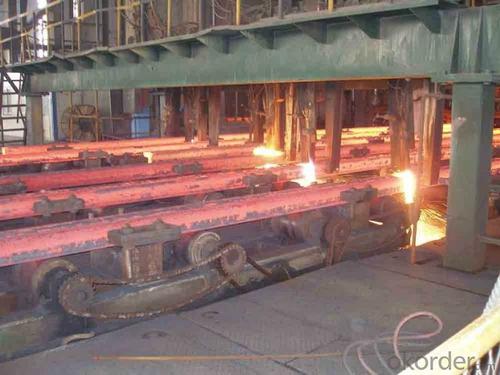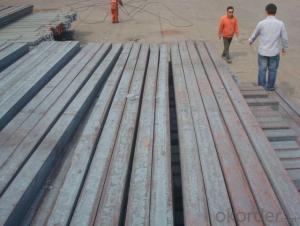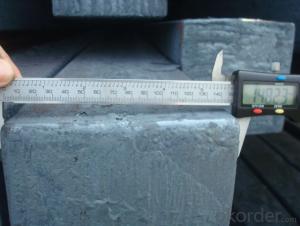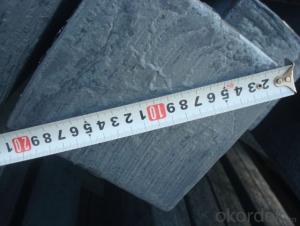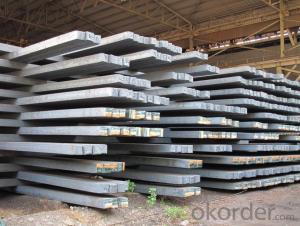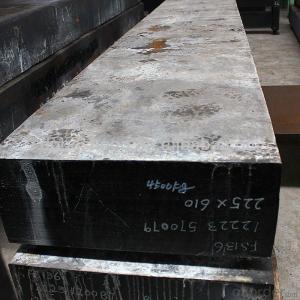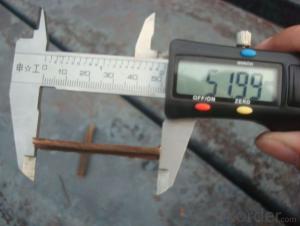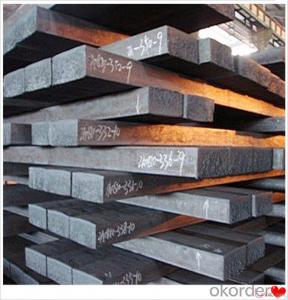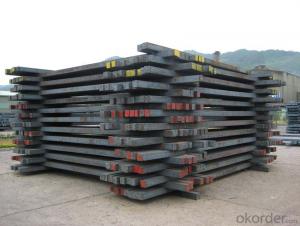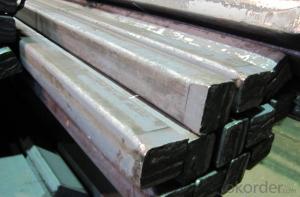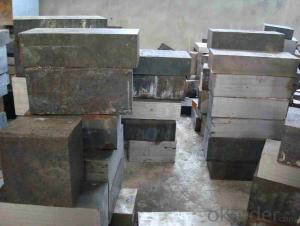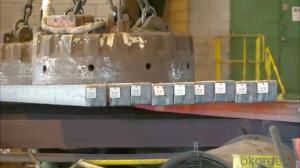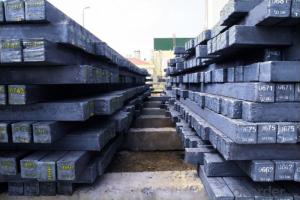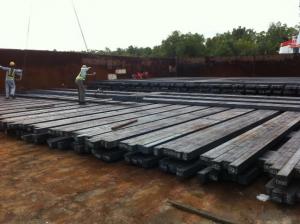Z43 BMP Rolled Steel Coil Construction Roofing Construction
- Loading Port:
- Tianjin
- Payment Terms:
- TT OR LC
- Min Order Qty:
- 100 m.t.
- Supply Capability:
- 10000 m.t./month
OKorder Service Pledge
OKorder Financial Service
You Might Also Like
Structure of Z43 BMP Rolled Steel Coil Construction Roofing Construction
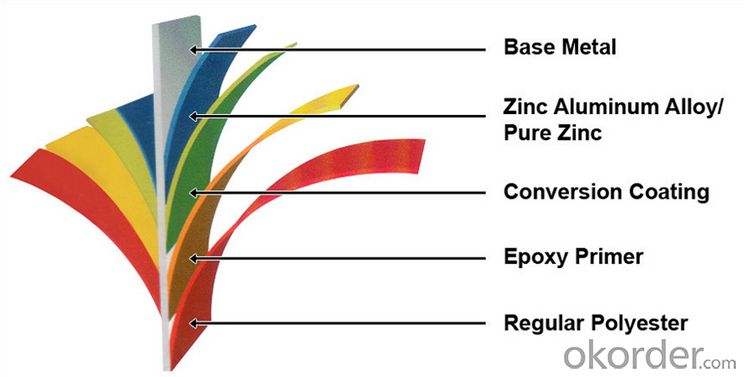
Description of Z43 BMP Rolled Steel Coil Construction Roofing Construction
PPGI is made by cold rolled steel sheet and galvanized steel sheets as baseplate, through the surface pretreatment (degreasing, cleaning, chemical conversion processing), coated by the method of continuous coatings (roller coating method),
and after roasting and cooling. Zinc coating: Z60, Z80, Z100, Z120, Z180, Z275, G30, G60, G90
Alu-zinc coating: AZ60, AZ80, AZ100, AZ120, AZ180, G30, G60, G90
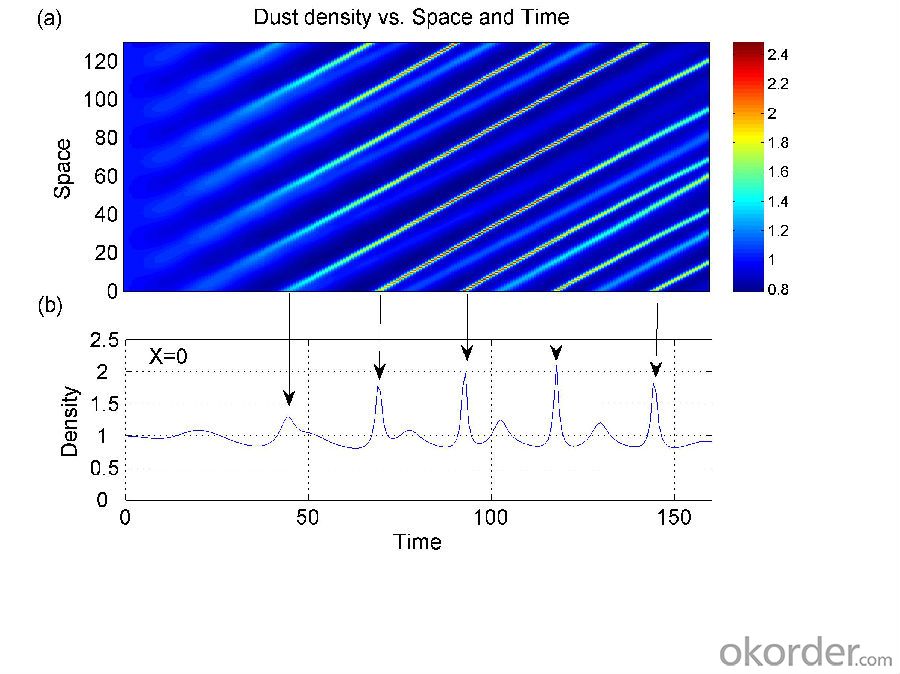 Main Feature of Z43 BMP Rolled Steel Coil Construction Roofing Construction
Main Feature of Z43 BMP Rolled Steel Coil Construction Roofing Construction
1) Excellent corrosion resistance: The zinc layer provides a good protection of Pre-painted Galvanizeed Steel Sheet.
2) High heat resistance: The reflective surface of the material aids in efficiently reflecting the sunlight away and in turn reducing the amount of heat transmitted. The thermal reflectivity converts into energy savings.
3) Aesthetics: Pre-Painted Galvanized steel sheet is available in plethora of patterns and multiple sizes as per the requirements that given by our customers.
4) Versatility: can be used in the various areas.Standard seaworthy export packing: 3 layers of packing, inside is kraft paper, water plastic film is in the middle and outside GI steel sheet to be covered by steel strips with lock, with inner coil sleeve.
Applications of Z43 BMP Rolled Steel Coil Construction Roofing Construction
1. Construction and building: roofing; ventilating duct; handrail; partition panel;etc.
2. Electric appliance: refrigerator; washing machine; refrigerator; DVD;etc.
3.Transportation: oil tank; road sign; etc.
4.Agriculture:barn; etc.
5.Others:vending machine; game machine; etc. 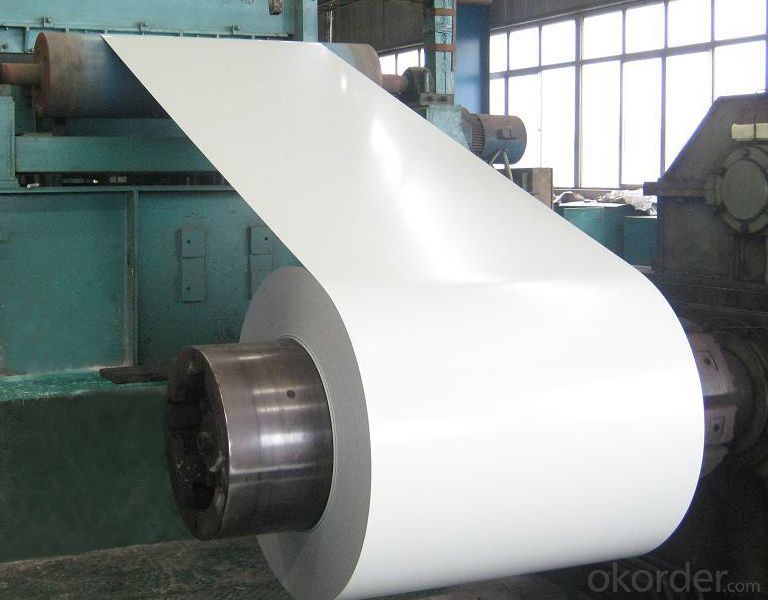
Specifications of Z43 BMP Rolled Steel Coil Construction Roofing Construction
| Classified symbol | Yield Point Minimum N/mm2 | Tensile Strength Minimum | Elongation Minimum % | Application | ||||
| N/mm2 | Nominal Thickness mm (t) | |||||||
| JIS | Yogic | 0.25-0.4 | 0.4-0.6 | 0.6-1.0 | 1.0-1.6 | |||
| G3312 | specification | |||||||
| CGCC | CGCC | -205 | -270 | -20 | -21 | -24 | -24 | Commercial |
| CGCD | CGCD | --- | 270 | --- | 27 | 31 | 32 | Drawing |
| --- | CG340 | 245 | 340 | 20 | 20 | 20 | 20 | Structural |
| CGC400 | CG400 | 295 | 400 | 16 | 17 | 18 | 18 | Structural |
| CGC440 | CG440 | 335 | 440 | 14 | 15 | 16 | 18 | Structural |
| CGC490 | CG490 | 365 | 490 | 12 | 13 | 14 | 16 | Structural |
| CGC570 | CG570 | 560 | 570 | --- | --- | --- | --- | Structural |
| ASTM Designation | Yield Point Minimum | Tensile Strength Minimum | Elongation Minimum % | Application | Q/BQB 445-2004(China standard) | ASM A653/A653M | JISG 3312 | |
| ksi(MPa) | ksi(MPa) | TDC51D+Z | (CS TYPE A+Z) | CGCC | ||||
| A653(M)-99 CS TYPE A,B,C | --- | --- | --- | Commercial | TDC52D+Z | CGCD | ||
| A653(M)-99 FS | --- | --- | --- | Lock Forming | TS250GD+Z | (G250+Z) | - | |
| A653(M)-99 DS | --- | --- | --- | Drawing | TS300GS+Z | (G300+Z) | CGC 400 | |
| A653(M)-99 SS Grade33(230) | 33(230) | 45(310) | 20 | Structural | TS350GD+Z | (G350+Z) | CGC490 | |
| A653(M)-99 SS Grade37(255) | 37(255) | 52(360) | 18 | Structural | TS550GD+Z | (G550+Z) | CGC570 | |
| A653(M)-99 SS Grade40(275) | 40(275) | 55(380) | 16 | Structural | ||||
| A653(M)-99 SS Grade50(345) | 50(345) | 65(450) | 12 | Structural | ||||
| A653(M)-99 SS Grade80(550) | 80(550) | 82(570) | --- | Structural | ||||
FAQ of Z43 BMP Rolled Steel Coil Construction Roofing Construction
We have organized several common questions for our clients,may help you sincerely:
1. How Can I Visit There?
Our company is located in Tianjin City, China, near Beijing. You can fly to Tianjin Airport Directly. All our clients, from home or aboard, are warmly welcome to visit us!
2. How Can I Get Some Sample?
We are honored to offer you sample.
3. Why choose CNBM?
1, ISO, BV, CE, SGS approved.
2, Competitive price and quality.
3, Efficient service team online for 24 hours.
4, Smooth production ability(50000tons/month) .
5, quick delivery and standard exporting package.
6, Flexible payment with T/T, L/C, Paypal, Kunlun bank, etc .
- Q: What are the main types of steel billet rolling mills?
- Various types of steel billet rolling mills exist, each possessing unique characteristics and functionalities to cater to the diverse requirements of different industries. 1. Two-high rolling mills: These mills comprise two horizontally mounted rolls rotating in opposite directions. Two-high mills are commonly utilized for shaping and reducing the thickness of steel billets. They boast a relatively simple design and are suitable for light to medium-duty applications. 2. Three-high rolling mills: Three-high mills consist of three rolls arranged vertically in a triangular configuration. The upper and lower rolls are driven, while the middle roll remains idle and adjustable. This design allows for greater flexibility in shaping and reducing the dimensions of the billet. Three-high mills are often employed to produce high-quality finished products with precise dimensions and surface finishes. 3. Four-high rolling mills: Four-high mills possess four rolls, including two small diameter work rolls and two larger diameter backup rolls. The work rolls are driven, while the backup rolls provide support and adjust the billet's thickness. Four-high mills are highly versatile and can be utilized for a wide range of applications, encompassing both hot and cold rolling processes. 4. Cluster mills: Cluster mills consist of multiple small-diameter rolls arranged in a cluster. These rolls collaborate to reduce the billet's thickness and shape it into the desired form. Cluster mills are commonly utilized to produce high-precision products such as wires and thin strips. 5. Steckel mills: Steckel mills are specialized rolling mills designed for the production of heavy-gauge plates and strips. They incorporate a combination of a reversible rolling mill and a continuous casting machine. Steckel mills are renowned for their high productivity and the capability to manufacture a wide array of steel products with excellent surface quality. Each type of steel billet rolling mill boasts specific advantages and is suitable for particular applications. The selection of a mill depends on factors including the desired final product, required dimensions, production volume, and budgetary limitations.
- Q: How are steel billets used in the production of agricultural components?
- Steel billets are an essential raw material used in the production of various agricultural components. These billets serve as the starting point for the manufacturing process, where they are transformed into a wide range of agricultural components such as plows, harrows, tillers, cultivators, and seeders. The steel billets are first melted down and cast into a solid form, typically a rectangular or square shape, with a consistent cross-section. This solid piece of steel is then heated and rolled into the desired shape and size required for the specific agricultural component being produced. Once the billets have been rolled and shaped, they undergo further processes such as cutting, drilling, bending, and welding to form the final agricultural component. These components are designed to withstand the demanding conditions of the agricultural industry, including exposure to harsh weather, heavy loads, and frequent use. Steel billets offer several advantages in the production of agricultural components. Firstly, steel is a strong and durable material, providing the necessary strength and resilience required for agricultural machinery to operate effectively. Additionally, steel is highly resistant to corrosion, ensuring that the agricultural components can withstand exposure to moisture, fertilizers, and other chemicals commonly used in farming. Furthermore, steel billets can be easily customized and fabricated into different shapes and sizes, allowing for the production of a wide variety of agricultural components that cater to specific farming needs. The versatility of steel billets also enables manufacturers to create components with intricate designs and features, enhancing their functionality and performance. In conclusion, steel billets play a crucial role in the production of agricultural components. The versatility, strength, and durability of steel make it an ideal material for manufacturing machinery and equipment used in the agricultural industry. By starting with steel billets and transforming them through various manufacturing processes, agricultural components are created that can withstand the demanding conditions of farming and contribute to the efficiency and productivity of agricultural operations.
- Q: How are steel billets inspected for surface finish?
- To ensure quality and compliance with industry standards, various methods and techniques are employed to inspect the surface finish of steel billets. Visual inspection is a common approach, where trained inspectors carefully examine the billet's surface for any defects, such as scratches, pits, cracks, or irregularities. This examination is typically conducted under appropriate lighting conditions to enhance defect visibility. Another method employed is non-destructive testing (NDT), which encompasses techniques like magnetic particle inspection (MPI) and liquid penetrant inspection (LPI). MPI involves the application of a magnetic field to the billet, followed by the use of a magnetic particle suspension to reveal surface defects by adhering to them. On the other hand, LPI involves the application of a liquid penetrant solution to the billet's surface, which is subsequently removed and followed by the application of a developer to highlight any defects. Ultrasonic testing (UT) is also commonly utilized to inspect the surface finish of steel billets. UT employs high-frequency sound waves transmitted through the billet, with any reflected waves analyzed to detect surface or subsurface defects. This method provides detailed information about the surface condition and can even detect minute flaws. Additionally, surface profilometers can be employed to measure the roughness of the billet's surface. These devices utilize a stylus or laser to measure height variations on the surface, thereby providing data on roughness and texture. In summary, a combination of visual inspection, NDT techniques, and surface profilometry is employed to conduct thorough inspections of steel billets' surface finish. These inspections play a crucial role in ensuring that the billets meet the required surface finish standards and are suitable for further processing or manufacturing.
- Q: Use medium frequency furnace (1 million 500 thousand volt ampere) to produce 1 ton cast steel blank, how much kilowatt hour is consumed?
- This depends on the intermediate frequency furnace voltage level and inverter efficiency, the general high voltage will save power, generally 550-700 range, details can refer to wcdlsb site medium frequency furnace data
- Q: What is the role of steel billets in the construction of dams and reservoirs?
- The role of steel billets in dam and reservoir construction cannot be overstated. These semi-finished steel products are vital for manufacturing various components and structures necessary for the construction process. A primary application of steel billets in dam and reservoir construction is their use in producing reinforced concrete. Reinforced concrete combines the strength and durability of steel with the versatility and moldability of concrete. Steel billets are utilized to create steel reinforcement bars, commonly called rebars, which are embedded within the concrete to improve its tensile strength and prevent cracking when subjected to heavy loads. These rebars provide the necessary structural support for the dam or reservoir, ensuring its stability and long life. Furthermore, steel billets are essential for fabricating gates, penstocks, and other mechanical components required for dams and reservoirs. These components play a crucial role in regulating water flow, controlling water levels, and managing the release of water from the reservoir. Steel billets are forged, rolled, or machined to manufacture these specialized components, guaranteeing their strength, reliability, and resistance to corrosion. Moreover, steel billets are indispensable in constructing spillways, which are designed to safely discharge excess water from reservoirs during periods of heavy rainfall or floods. Spillway gates, channels, and other structures are often made from steel billets because they need to withstand high water pressure and turbulent flow conditions. To summarize, steel billets are vital in dam and reservoir construction. They are instrumental in producing reinforced concrete, thereby providing structural support and enhancing the overall strength of the structure. Steel billets are also used in the production of gates, penstocks, spillways, and other mechanical components, ensuring the efficient operation and long-term durability of these crucial water management infrastructures.
- Q: How do steel billets contribute to the overall aesthetics of a structure?
- Steel billets, which are essentially semi-finished steel products, play a significant role in enhancing the overall aesthetics of a structure. While their primary purpose is to provide strength and support, their visual appeal should not be underestimated. First and foremost, steel billets are responsible for the creation of various architectural elements, such as columns, beams, and decorative features. These elements not only serve structural purposes but also contribute to the overall aesthetics of the building. The clean lines and sleek appearance of steel billets can give a modern and contemporary feel to the structure, adding a touch of sophistication and elegance. Moreover, steel billets can be manipulated and shaped into intricate designs and patterns, making them highly versatile in terms of aesthetics. Whether it is a grand entrance gate, a unique staircase railing, or an ornate decorative panel, steel billets can be molded and fabricated to create visually appealing and eye-catching features that enhance the overall charm of the structure. Furthermore, steel billets can be finished with various coatings, such as paint, powder coating, or galvanization, which not only provide protection against corrosion but also contribute to the aesthetic appeal. These finishes allow for customization, as they can be chosen to complement the overall design and color scheme of the structure, creating a cohesive and visually pleasing look. In addition, steel billets can be used in combination with other materials, such as glass or wood, to create stunning architectural features. The contrast between the strength and rigidity of steel and the transparency or warmth of other materials can create a visually striking effect, adding depth and interest to the structure's design. Lastly, steel billets offer a sense of durability and timelessness to the structure. The inherent strength and resilience of steel give the impression of solidity and longevity, which are essential factors in creating an aesthetically pleasing building. The sleek and modern appearance of steel billets can also evoke a sense of progress and innovation, enhancing the overall aesthetic appeal of the structure. In conclusion, steel billets contribute to the overall aesthetics of a structure by providing structural support, allowing for intricate designs, offering customization options, creating contrasts with other materials, and conveying a sense of durability and timelessness. Their visual appeal, along with their strength and versatility, makes steel billets an essential component in creating an aesthetically appealing and architecturally pleasing structure.
- Q: How are steel billets used in the manufacturing of hydraulic cylinders?
- Steel billets are an essential component in the manufacturing of hydraulic cylinders. These billets, which are cylindrical shapes of raw steel, serve as the starting material for the production process. Hydraulic cylinders are widely used in various industries, such as construction, mining, and automotive, to provide linear force and motion. They consist of a cylindrical barrel, a piston, and a piston rod that moves back and forth within the barrel. To manufacture hydraulic cylinders, steel billets are first heated and then shaped using specialized machinery such as a hydraulic press or a hot rolling mill. This process, known as forging, involves applying immense pressure and heat to the steel billet to reshape it into the desired form. The forged steel billet is then machined and precision-cut to create the necessary features, such as the bore and the mounting holes, that are required for the hydraulic cylinder. This machining process ensures that the cylinder has the correct dimensions and tolerances to function properly. After machining, the steel billet is further heat-treated to enhance its mechanical properties. This heat treatment process involves heating the billet to a specific temperature and then rapidly cooling it, which improves its strength, hardness, and resistance to wear and fatigue. Once the steel billet has undergone forging, machining, and heat treatment, it is ready to be assembled into a hydraulic cylinder. The various components, such as the piston, piston rod, seals, and bearings, are carefully fitted together to create a fully functioning hydraulic cylinder. In conclusion, steel billets play a crucial role in the manufacturing of hydraulic cylinders. They are transformed through forging, machining, and heat treatment processes to create the necessary components with the desired properties. The resulting hydraulic cylinders are then used in a wide range of applications, providing efficient and reliable linear force and motion.
- Q: What are the different types of defects that can occur in steel billets?
- Steel billets can have various types of defects, which may arise during manufacturing or due to external factors. Common defects are as follows: 1. Surface defects: Scratches, pits, scabs, scale, and cracks can be found on the outer surface of the billet. These defects occur because of mishandling, improper cooling, or contamination during manufacturing. 2. Internal defects: Voids, porosity, inclusions, and segregation are defects that exist within the billet body and are not visible on the surface. They occur due to improper solidification, incorrect casting, or impurities in the steel. 3. Dimensional defects: When the billet fails to meet the desired dimensions or tolerances, dimensional defects arise. These defects include variations in length, width, thickness, or straightness. Improper rolling, uneven cooling, or equipment misalignment can cause such defects. 4. Mechanical defects: The mechanical properties of the steel billet are affected by these defects. They can include improper grain structure, low hardness, brittleness, or poor toughness. Mechanical defects occur due to improper heat treatment, incorrect alloy composition, or inadequate rolling processes. 5. Weld defects: For welded billets, defects related to the welding process can occur. Lack of fusion, incomplete penetration, porosity, or cracks in the weld zone are common weld defects. Improper welding parameters, inadequate preparation, or contamination during the welding process can cause such defects. To ensure the quality and integrity of steel billets, it is crucial to detect and address these defects. Various inspection techniques, such as visual inspection, ultrasonic testing, magnetic particle testing, or radiographic testing, can be employed to identify and classify these defects.
- Q: What is the cost of producing steel billets?
- The cost of producing steel billets can vary depending on various factors such as the quality of the raw materials used, the production process employed, and the market conditions. Generally, the cost of producing steel billets includes several components. Firstly, the cost of raw materials, which typically include iron ore, coal or coke, and other alloying elements. The prices of these materials can fluctuate based on global market dynamics and availability. Secondly, the cost of energy is a significant factor in steel billet production. This includes the cost of electricity and fuel required for the manufacturing process, such as powering the blast furnaces or electric arc furnaces used to melt the raw materials. Thirdly, labor costs play a crucial role in the overall cost of production. This includes wages for skilled and unskilled workers involved in operating the machinery, maintaining equipment, and overseeing the production process. Additionally, there are indirect costs that need to be considered, such as maintenance and repair expenses for machinery, transportation costs for raw materials and finished products, and overhead costs related to administrative functions. It is important to note that the cost of producing steel billets can also be influenced by external factors like government regulations, tariffs, and taxes. Furthermore, market demand and competition can impact pricing strategies and ultimately affect production costs. Therefore, providing an exact cost figure for producing steel billets is challenging as it is subject to constant fluctuations. It is best to consult industry experts or steel manufacturers for the most accurate and up-to-date information on production costs.
- Q: What does the billet of the steel plant refer to?
- The steel billet is the continuous casting machine by smelting steel plant casting into the blank, in the middle of products before entering the rolling process, the section size will be decided by rolling steel. When rolling the long material, the square billet is poured, the rolled plate is cast, the rolling pipe is cast into round billet, and the rolled narrow strip steel is poured into the rectangular billet, etc..
Send your message to us
Z43 BMP Rolled Steel Coil Construction Roofing Construction
- Loading Port:
- Tianjin
- Payment Terms:
- TT OR LC
- Min Order Qty:
- 100 m.t.
- Supply Capability:
- 10000 m.t./month
OKorder Service Pledge
OKorder Financial Service
Similar products
Hot products
Hot Searches
Related keywords






